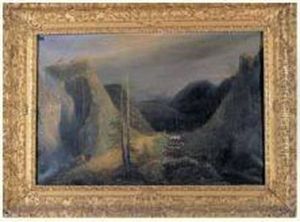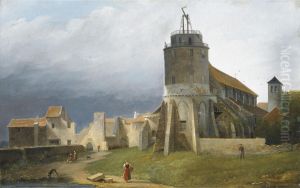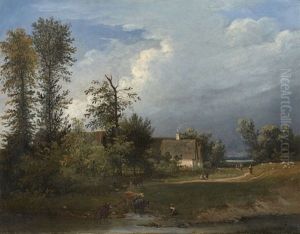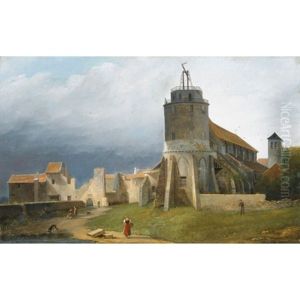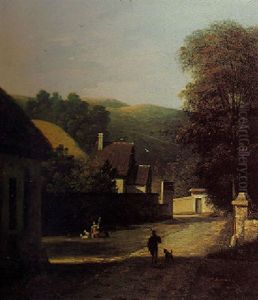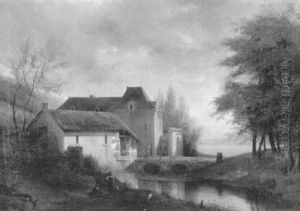Auguste Jacques Regnier Paintings
Auguste Jacques Regnier was a French painter, born on October 26, 1787, in Paris, France. He was part of the early 19th-century Romantic movement in French art and is known for his historical and mythological scenes, as well as his portraits. Regnier was a student of the renowned Jacques-Louis David, who was a dominant figure in French painting, particularly in the Neoclassical style.
Regnier's career began to flourish after he won the prestigious Prix de Rome in 1817 for his painting 'Œdipe expliquant l’énigme du sphinx' (Oedipus Explaining the Enigma of the Sphinx), which allowed him to study at the French Academy in Rome, a pivotal institution for many European artists of the time. There, he was exposed to the works of the Italian masters and the ancient art that would greatly influence his style.
During his time in Rome, Regnier developed a style that combined the clarity and firm contours of his teacher David with the more emotive and dynamic aspects of Romanticism. He returned to France in the early 1820s and continued to exhibit his work at the Paris Salon, receiving medals for his contributions in 1827 and 1831. His subjects often included scenes from ancient history and literature, as well as religious themes, which were popular among the Romantic artists of his time.
Though not as widely remembered as some of his contemporaries, such as Eugène Delacroix or Théodore Géricault, Regnier contributed to the vibrant artistic scene of his day. His works reflect the transition from Neoclassicism to Romanticism, capturing the tension between the ordered beauty of the former and the expressive, often turbulent emotionality of the latter.
Auguste Jacques Regnier's career was marked by his commitment to historical accuracy and detail, as well as his ability to convey the human element within these grand narratives. He passed away on December 5, 1860, in Paris. Today, his works can be found in various museums and collections, offering insight into the artistic transitions of 19th-century French art.
